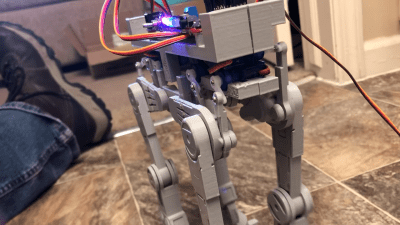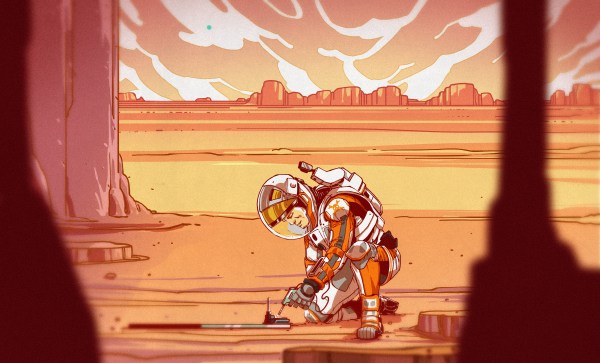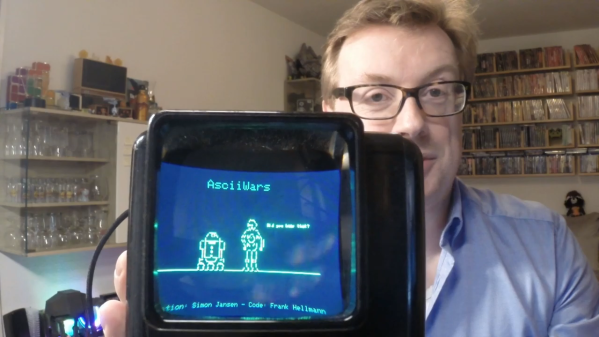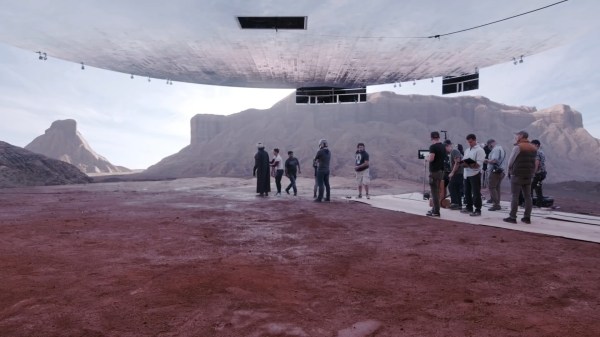The AT-AT Walker was one of the more fearsome weapons of the Star Wars universe, even if it was incredibly slow and vulnerable to getting tangled up in Rebel tow cables. However, you can build your own small-scale example using servos for propulsion, as [Luke J. Barker] ably demonstrates.

The build is a remix of the motorized AT-AT from [LtDan] on Thingiverse, originally powered by a 90 rpm DC gearmotor. [Luke] remixed the design, setting it up to be driven by eight servomotors instead. They’re controlled from a SparkFun RedBoard Edge, an Arduino-compatible microcontroller board that fits rather neatly inside the AT-AT shell.
Programmed with a simple sine-wave walk cycle, the AT-AT ambles along in a ponderous manner. It’s altogether very much like the real fictitious thing, albeit without the scorching sizzle of blaster fire ringing out across a frozen plain.
Quadruped vehicles never really caught on for military use, but that’s not to say nobody ever tried. Video after the break.
Continue reading “2022 Sci-Fi Contest: Motorized AT-AT Walker Gets Around With Servos”


















